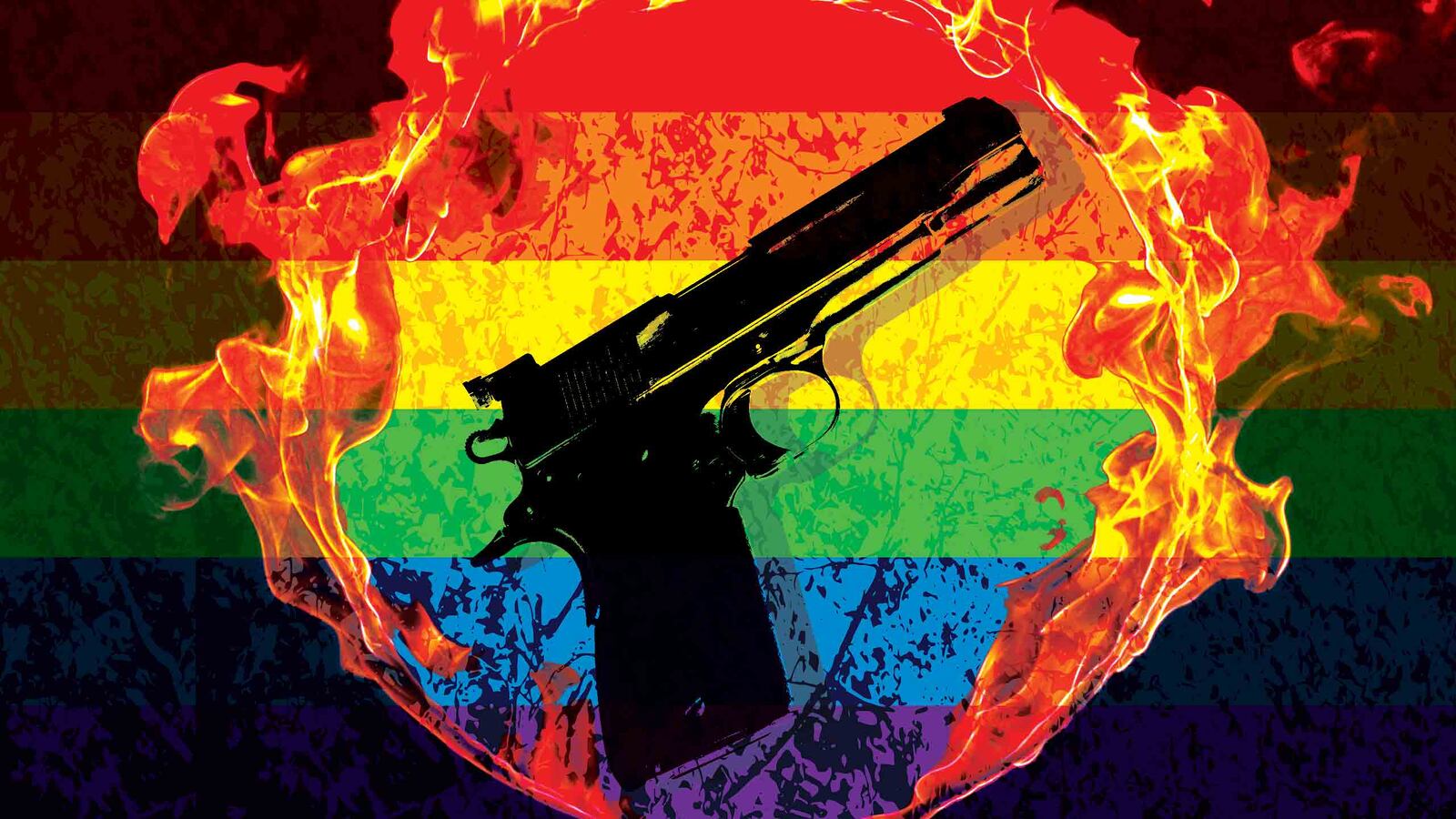2016 was the deadliest year on record for the LGBT community, according to a new report from the National Coalition of Anti-Violence Programs.
And even setting aside the 49 victims of the Pulse nightclub massacre last June, the NCAVP still tracked a 17 percent increase in anti-LGBT homicides from 2015 to 2016.
“The enormous tragedy at Pulse Nightclub, in concert with the daily violence and discrimination that pervades our lives as LGBTQ people, and an incendiary political climate, have created a perfect storm of fear and trauma for our communities this year,” said Melissa Brown at the Kansas City Anti-Violence Project in a press release accompanying the report, released Monday on the one-year anniversary of the Orlando mass shooting.
Between the largely Latino victims of the Pulse shooting and the transgender women of color who were murdered last year, the NCAVP report shows that LGBT people of color continue to bear the brunt of homophobic and transphobic violence in the United States.
“We must work to dismantle the biases, such as transphobia, biphobia, homophobia and racism, which undergird all of this violence,” Brown added.
Including the victims of the Pulse shooting, the NCAVP counted 77 anti-LGBT homicides in 2016. But because the sexual and gender identities of many of the Pulse victims could not be confirmed, the anti-violence organization also tallied 28 individual anti-LGBT homicides throughout the year, up from 24 in 2015. This latter group of victims were largely transgender, 64 percent black, and over half were younger than 35.
“In general, I can say that in the past five to seven years, homicide rates have been high or up and appear to be staying up,” Sue Yacka, communications director for the New York City Anti-Violence Project, told The Daily Beast when asked how this homicide data compared to previous years. “There are many reasons for this, including a likely actual increase, better reporting by media, and better data collection by organizations like ours.”
The stories of the victims, included in brief at the end of the report, are heartbreaking: Maurice Jones, a 44-year-old black cisgender man living in Queens, was “strangled to death” last September and “left in a burning car.” Thirty-two-year old transgender woman Brandi Bledsoe was fatally shot in her Cleveland, Ohio, driveway last October. Erykah Tijerina, a Latina transgender woman, was fatally stabbed in her El Paso apartment in August.
Many of these victims were misgendered by local media after their deaths, making it difficult for advocates to track the violent killings of transgender and gender non-conforming people.
The NCAVP also tracked over 1,000 reported incidents of non-fatal anti-LGBT hate violence—such as sexual violence, physical violence, stalking, bullying, and verbal harassment—through partner organizations nationwide.
Most of this violence, the report notes, came from “someone who was known to [the survivor]” including “landlords, neighbors, employers, and family members.” Over 40 percent of this group of survivors identified as gay and over 40 percent were cisgender.
Anti-LGBT violence shows no signs of stopping in 2017. In the first 60 days of the new year, as The Daily Beast previously reported, there were already seven reported killings of transgender women, placing the year on track to be the most violent on record for the U.S. transgender community. Now in June, the Human Rights Campaign has tracked at least 12 reported killings of transgender people this year.
But even as this reported physical violence escalates, LGBT people remain in a precarious political position both federally, and at the state level. LGBT anti-violence advocates see these two trends as linked.
“Recent executive orders as well as ongoing efforts to pass anti-LGBTQ legislation and roll back protections at the city, state, and federal level make LGBTQ people vulnerable to identity-based discrimination as we go about our daily lives,” said Beverly Tillery at the New York City Anti-Violence Project.
The NCAVP report paints a clear increase in anti-LGBT bills over the last three years: 125 introduced in 32 state legislatures in 2015, 156 introduced in 32 states in 2016, and 100 in 29 states in 2017 so far.
Most memorably in 2016, North Carolina passed the anti-transgender “bathroom bill” HB2—a move the Texas state legislature may imitate during a special session this summer.
Rather than continuing the Obama administration’s moves to protect transgender Americans, the Trump administration has withdrawn legal defenses of transgender rights, rescinded federal guidance protecting transgender students’ restroom rights, and effectively sent transgender teenager Gavin Grimm’s potentially precedent-setting case back down to the 4th Circuit from the Supreme Court.
All the while, only 16 states and D.C. have hate crime legislation that specifically protects people based on sexual orientation and gender identity, according to data from the Human Rights Campaign.
For those reasons, Tillery believes that the best way to mitigate anti-LGBT violence going forward might be to stop the LGBT laws in state legislatures nationwide.
“These attacks on our communities send the message that discrimination and violence against LGBTQ people is acceptable,” she said. “Every one of us must call out and resist religious exemption and anti-LGBTQ public accommodation bills for the hateful legislation that they are, and advocate for increased protections for LGBTQ communities on the state and federal level.”






